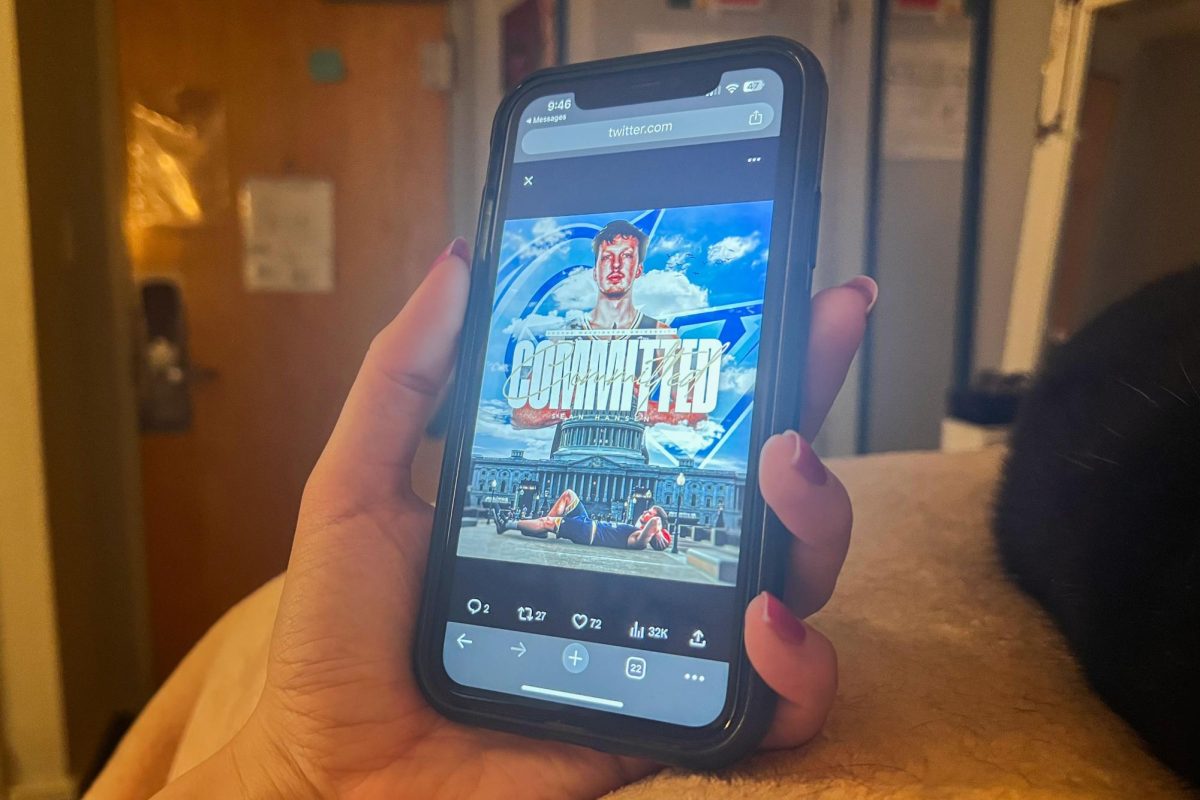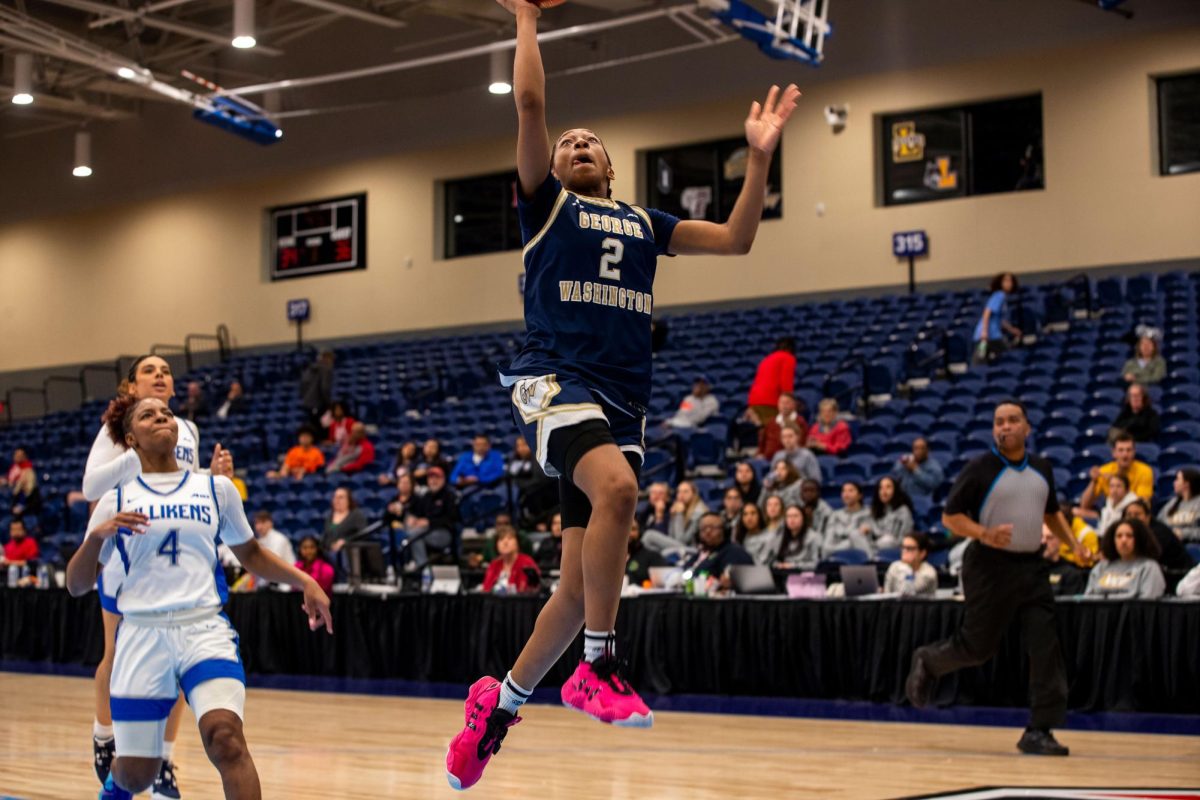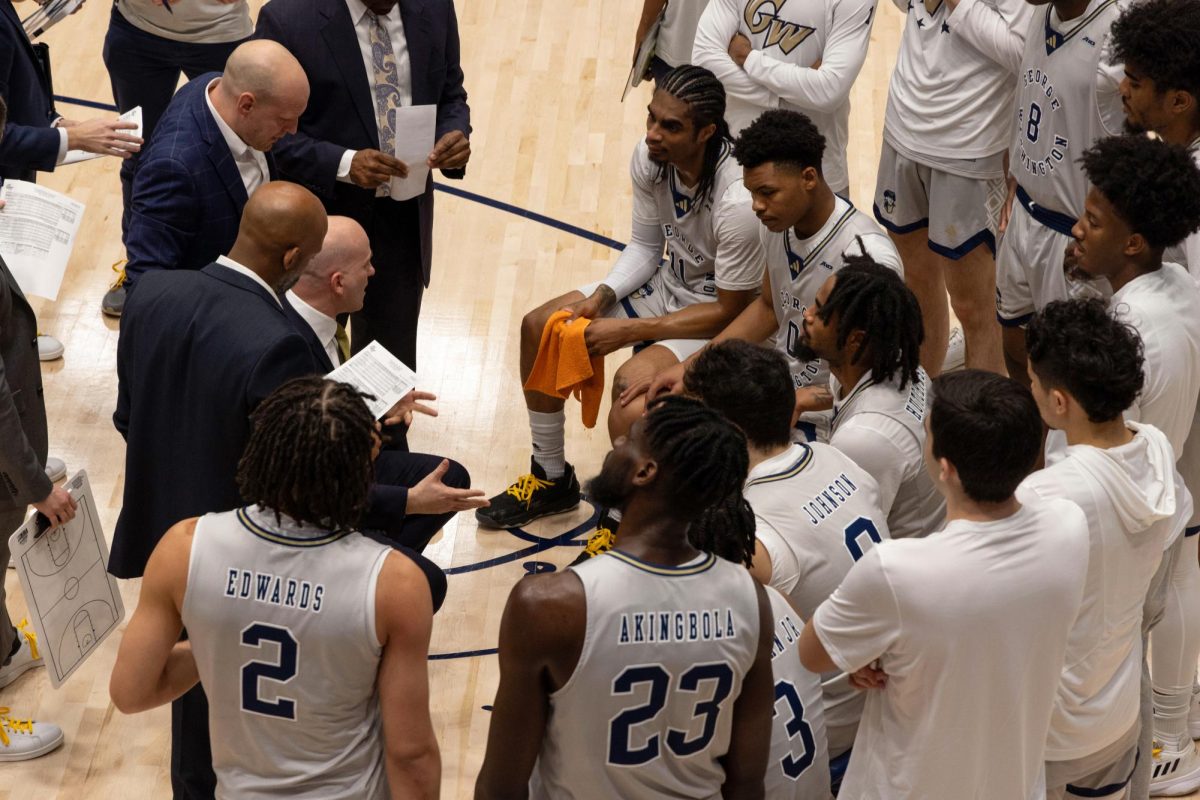The last college football season of the 1900s kicked off Saturday when Penn State University romped over the University of Arizona, 41-7. And I don’t know about you, but it brought me back to a blustery fall day in 1928 when the Nittany Lions routed GW’s Hatchetites 50-0. Ah, what a mighty smiting that was.
Hahahahaha!. But wait. That actually happened. In fact, it’s fairly common knowledge around here that GW once took part in the football world, but for most of us, the idea of it actually having occurred is merely theoretical. So indulge me. It’s time for another look at GW’s athletic past, this time focusing on one of the curiosities of GW’s history that still seems to captivate many of us today.
First of all - funny thing about the past – it wasn’t that long ago. Let’s consider the late Shirley Povich (FYI – Maury’s dad), a columnist for The Washington Post. He was writing for The Post when that 1928 Penn State game was played. And guess when he wrote his last column?.1998. But to start our story, we’ll step back to a time and place that not many of us on Earth witnessed: the nation’s capital, circa 1890.
At this time, the Columbian University (it would become GW in 1904) was at its second location (in midtown, northeast of the White House), where it stayed from the 1880s until the move to Foggy Bottom in 1912. College football, which crowned its first poll champion in 1869, was ruled by the Ivy League.
By 1890, the ball was similar to a rugby ball. The field was 110 yards. To retain possession, a team had three downs to go five yards. A touchdown was four points, while a field goal was five points. The pass did not exist, and the uprights were on the goal line. Eleven players were on a team and there were no equipment rules. It’s not much of a stretch to say that anything went in those days, and that’s why for decades the game was under heavy fire for being too dangerous, even deadly (10 college players died in 1905).
On Saturday, Nov. 8, 1890, the Columbian football team defeated a team from Kalorama Heights 10-0. The team went on to finish 2-2, but football was dropped for the next five years. There would be stoppages off and on until the 1920s, when the team became a GW mainstay, ruling the Foggy Bottom scene for much of its 58 years.
The football team’s early years had its moments. You might not count them as “moments,” but if you like lopsided scores, the early decades were your time. In 1930, GW beat the New York Aggies 86-0. In 1925, GW knocked off Buffalo 59-0, and the two schools have been going in opposite directions ever since. Buffalo just became the newest member of the Division I-A ranks this season.
Then there was the day in 1920 that our boys lost to West Virginia 81-0. Not to be outdone, West Virginia-Wesleyan beat us 101-7 that same season.
In 1924, the team got its first stable coach, Maud Crum, who stayed until the 1928 campaign. Under his reign, when he also coached the men’s basketball team, GW teams were known as “Crum-men,” or sometimes “Hatchetites.” In 1928, we became the “Colonials.” 1928 was also the year GW’s winningest football coach arrived: James “Possum Jim” (everybody had a nickname then) Pixlee.
“Winningest” was probably not the word Pixlee had in mind in 1929, when his first year ended 0-8. But by 1932, he had turned the team around to a 6-2-1 record, while drawing more than 100,000 fans to Griffith Stadium for seven home games. (Griffith, which was where the Howard University Hospital is now, was the home of the American League’s Washington Senators from 1903 until 1961, when D.C. Stadium, a.k.a. RFK, opened).
By now, GW football was front-page news, mostly due to GW’s blockbuster home schedule and the good teams it was fielding. This headline topped the Oct. 7, 1932 Washington Post sports page: “20,000 MAY WATCH G.W. ELEVEN MEET ALABAMA.”
Bob Considine wrote in the article:
“The Bicentennial Boys of George Washington University will attempt the most heroic feat of their short and colorful grid careers tomorrow afternoon when they try to bale out the great Crimson Tide of Alabama, fully aware of the fact that they have picked a tremendously potent team to meet as their first foe in the inner circle of college football’s `Big Time.'”
Shirley Povich wrote in his column that morning:
“Win, lose or tie in the Alabama game tomorrow, George Washington University will have the satisfaction of `arriving’ in big league football circles.”
GW lost that game, 28-6, but in the same exciting season topped the University of Iowa 21-6, and in front of 18,000 on Thanksgiving, the Colonials tied, in dramatic fashion, the Sooners from the University of Oklahoma.
Then, a man arrived on campus whose talents would make him perhaps GW’s greatest athlete ever, and also its most overlooked – Alphonse “Tuffy” Leemans.
By the 1930s, the game was a little more like the one we know. The equipment was pretty basic, but no longer could you do things like wear a helmet that looked like a ball or sharpen your cleats to kill people. Passing was standard, and the point system was up to modern day.
This was the game that Tuffy entered, and he dominated. In his three-year career (1933-’35), he set GW records that it certainly appears will never fall, including most yards rushing in a season (1,054), most carries in a season (207), most carries in a career (490), and most yards rushing in a career (2,382). GW went 17-9-2 in Tuffy’s career, but the real reason Tuffy Leemans deserves to be well-remembered in Foggy Bottom is for what he did after he graduated.
The 6-foot, 200-pound halfback from GW went on to eight years of glory with the New York Giants, starting off his career by leading the league in rushing his rookie year (1936 – 830 yards). He was All-NFL twice (1936 and 1939), and was a world champion with the Giants in 1938. On Dec. 7, 1941, it was “Tuffy Leemans Day” at The Polo Grounds (although that day is remembered for other things).
But the career of Tuffy Leemans didn’t stop with college or Giants glory. On July 29, 1978, Tuffy Leemans was inducted into the Pro Football Hall of Fame. That’s right. A Colonial is in the Pro Football Hall of Fame. Leemans passed away Jan. 19, 1979 at the age of 66.
Meanwhile, back in Foggy Bottom, things were picking up. The 1936 team finished 7-1-1, the best record the school had amassed thus far. But, in 1937, Pixlee left the football team (with a 42-30-7 record), and Bill Reinhart took over. If you’re familiar with GW history, you might remember that Bill Reinhart is GW’s winningest basketball and baseball coach, and if you’re a freak like me, you know he led the Oregon Ducks to the 1919 Rose Bowl.
Harry Ledford (`41) played three years under Reinhart, later returned as a trainer in 1951 and stayed until the team was discontinued. He remembers a far different game when he played.
“I played halfback and end,” he said on the phone from his home in Elizabethton, Tenn. “In those days, you played both ways. It was an entirely different game then. The emphasis is on passing now. The game has really opened up. When I played, it was mostly just brute force.”
As for Reinhart, his 16-17-2 football record was fairly unremarkable, and GW faded back into mediocrity. During World War II, the team folded.
From 1948 until 1951, GW’s greatest quarterback played – Andy Davis. Davis threw for 3,587 yards in four seasons, and rushed for 1,416 yards.
In 1953, the football team joined the Southern Conference, and its greatest honors would arrive quickly. Coach Eugene “Bo” Sherman had arrived, and in 1953, he was the Southern Conference Coach of the Year. That same year, center Steve Korcheck was the Conference Player of the Year.
In 1956, GW football had its finest year. By now, the game had modernized quite a bit, and players looked much as they do today (newfangled helmets and all). In the regular season, GW eclipsed its 1936 record, going 7-1-1, but this time, there was more to come. The Colonials were invited to the 22nd annual Sun Bowl (probably so named because at its location in El Paso, it was a little
closer to the sun than many of us like to be) to play home team Texas Western (now the University of Texas at El Paso). Texas Western was 9-1 and favored by two touchdowns. But the Colonials that day were apparently not inclined to let what would be GW’s only bowl appearance end in a loss.
“We went out there and the kids just went to work and did it full force,” Harry Ledford said.
On New Year’s Day, 1957, 13,500 fans saw the Colonials win 13-0. A football from that game rests today in the Smith Center trophy case.
So, the Colonials of Foggy Bottom were not only Sun Bowl champions, but for the only time, the Associated Press considered them worthy of a ranking. In 1956, the Colonials were the 17th-greatest football team in all the land.
It was a memory that all involved will hold dearly forever.
“Oh, yes,” said Ledford, wistfully. “As a matter of fact, I was looking through that Sun Bowl program just the other day. I was glad to find that thing.”
After that record 8-1-1 year, GW followed it up with a 2-7-0 campaign and never won more than five games again. On Oct. 7, 1961, GW played in the first game at D.C. Stadium (now RFK). The old Griffith Stadium, where Mickey Mantle once hit a 565-foot home run, was torn down a few years later, and soon GW’s play matched its sterile surroundings.
Yet, from 1961 to 1963, Dick Drummond reigned, rushing for 1,814 yards in three years, making the All-Conference Team twice and providing a bright spot amid GW’s woes.
On Thanksgiving, 1966, the Colonials ended the season against Villanova at D.C. Stadium and lost 16-7, finishing at 4-6 (4-3 in the Conference). Head coach Jim Camp was named Southern Conference Coach of the Year.
At 4:46 p.m., on Jan. 19, 1967, the Board of Trustees voted to discontinue football. And that was that.
Ledford thinks a series of problems, not to mention the losing on the field, contributed to the end. The University could no longer afford the team, mostly because no one came to the games. It was the 1960s, of course, but Ledford also points out that the city had grown tremendously, and people were no longer willing to drive in and watch a game on a Friday night (when GW played most of its games). The Metro did not exist, of course, and the perception was the area around D.C. Stadium was unsafe. In addition, Ledford pointed out that Maryland and the University of Virginia had raised their level of play tremendously, leaving no room for GW in the D.C. football scene.
“I saw it coming,” Ledford said.
The GW football team died a death that only seems appropriate now. Who can imagine a football team here today? Plus, they were never that good. They won 209, lost 240, and tied 34 games (for a meager .468 winning percentage). Only six of the 20 coaches left with a winning record. We lost to Georgetown 13 times, and only won thrice.
But, still.
Now, there is little evidence that the sport of football was ever played at The George Washington University. Thirty of the 87 members of the GW Athletic Hall of Fame are football players. The Campbell-Kaufman Trophy (MVP, `61-’66) and The Tuffy Leemans Cup (top senior, `41-’65) sit in the Smith Center trophy case. A jersey and a program rest in the Gelman Library memorabilia room.
But the locker rooms at “The Tin Tabernacle” on the Quad were long ago torn down – after the Smith Center was built, satisfying Foggy Bottom’s new taste for basketball. Welling Hall, where all the athletes lived and studied, is now a parking garage at H and 22nd streets. Quigley’s Pharmacy, where every athlete’s name was known, is but a sign. Griffith is long gone, and no one even plays football at RFK anymore.
Like the savageness of the human spirit, the brutal sport of football has seemingly been left behind, but for those who lived it, it is never, never forgotten.
-Special thanks to Ed McKee for his contribution to this report.







